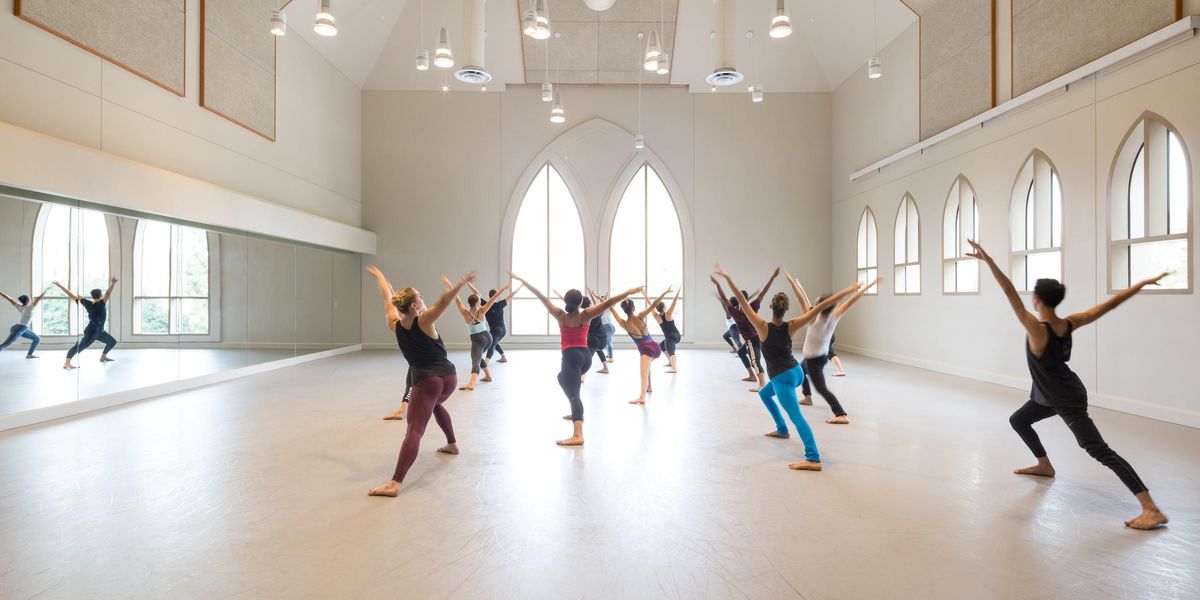Why I Choreograph: Amy O'Neal
Amy O’Neal’s company may be called AmyO/tinyrage, but there is nothing tiny about her explosive hybrid of modern, ballet, and hip-hop. She’s a force to be reckoned with on the Seattle dance scene. At Velocity Dance Center and Cornish College of the Arts (where she got her BFA), she teaches a galvanizing mix of technique, improvisation, and repertory. She’s also taken her gritty, highly physical, woman-proud work to Jacob’s Pillow Inside/Out series, Bates Dance Festival, and Joyce SoHo, as well as to cities in Japan and Mexico. Her performing history includes being a dancer with Pat Graney and being the lead singer (!) of Zeke Keeble’s band Marrow. In addition to her own company, O’Neal has choreographed for Seattle Theatre Group, Cornish Dance Theater, and Donald Byrd’s Spectrum Dance Theater.
I choreograph to stay sane, to let a gnawing instinct have a voice where words often fail, and to feel my way through the complexity of life in an abstracted performance context. This is not an escape: I often choreograph to face my fears. This may sound like therapy, and in some ways it is, but I ultimately choreograph to communicate in the most honest way I know how. My goal as a choreographer is to inspire the viewer to think and move, often with dark humor and heavy beats.
With my former company of 10 years, locust (music/dance/video), I made work about strange things humans do to deal with anxiety, sloth, materialism, loss, and being blindsided. Since 2009, under the moniker AmyO/tinyrage, I have made work about debilitating internal fights, fear of my own body, and owning my inner Ninja. Most of the works I’ve made have had an underlying current of social commentary, with a smaller amount being purely aesthetic. Through all of it, there is a distinct relationship to rhythm, both physically and musically. When I say rhythm, I don’t mean only drum beats; I also mean the rhythm of your blood moving while you stand still.
The majority of my training and life experience has been about culture clash, so naturally that is where my work often goes. In junior high, while living in Ankara, Turkey, my Turkish jazz teacher choreographed a piece to Pink Floyd’s  The Wall. I was inspired by this seemingly unnatural pairing. At that same time, I was going to a dance club on Saturday afternoons, where I danced with young people from all over the world. It was 1990, and we created a common movement vocabulary to songs by Bob Marley and Bel Biv DeVoe. This environment sparked something deep within me, a rooted understanding that dance was my life. I had performed plenty by that age and loved it, but this new knowledge wasn’t about performing: It was about living.
At 14, I told my father I wanted to be a professional dancer. He said if I wanted to make it a career, I had to be as versatile as possible. I started training at a top performing arts school in San Antonio, Texas, where my ballet teacher taught barre to Pet Shop Boys. To this day, I feel ballet more in my own body when electronic, soul, or hip-hop music is playing. When I was 16, I saw Alvin Ailey American Dance Theater perform Hymn by Judith Jamison. I learned that you don’t have to dance to music, and that the dance itself could be the music. I saw Donald Byrd/The Group perform  The Beast and I learned that you could make dance about social issues. Merce Cunningham’s work taught me that dance can be about pure aesthetics: time, space, and energy.
These early lessons are part of my artistic foundation. At the heart of them was the idea of dance being a part of everyday life. Dance wasn’t an untouchable skill. It was a skill that helped, and still helps, me connect to different kinds of people. In my work there is a long history of training, but underneath it is the vibe of everyday people getting together and letting off steam to their favorite jam, or locking yourself in your room and dancing out a bad day. For the audience, I hope there is just enough “Whoa, I can’t do that” and “Yeah, I feel that.”
Photo by Gabriel Bienczycki, Courtesy O’Neal via
Dance Teacher magazine.




